By Marcus Krembs, head of sustainability for Enel North America
As corporations and utilities continue to look to renewable energy to help them reach sustainability and renewable portfolio standard (RPS) commitments, solar development has flourished. According to the U.S. National Renewable Energy Laboratory, it’s predicted that utility-scale solar sites are on track to occupy nearly 2 million acres in the United States by 2030.
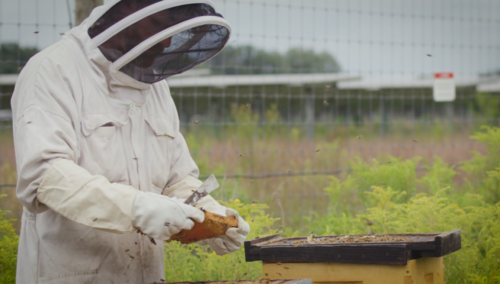
Enel North America
This outsized growth has raised important considerations about land use, as the terrain used for farming and crop production is typically the ideal environment for solar panels — flat acreage in areas with abundant sunshine. However, emerging research and demonstrated practices exhibit “techno-ecological synergies” — the symbiotic pairing of technology and its immediate environment — to help capture win-win outcomes in solar energy development, society and the environment.
The solution: dual-use solar, the co-development of land for both ecological purposes and solar power to produce mutually beneficial solar energy generation while co-locating food, pollinator-friendly vegetation or livestock grazing practices to ensure land is used to its full potential.
Sustainable solutions break down barriers to solar growth
Dual-use solar is an innovative, sustainable approach to solar development that provides positive outcomes for all parties involved by enabling property owners to incorporate solar power on their land while creating mutually beneficial land-use practices.
In close consultation with local stakeholders and factoring site-specific characteristics, solar developers can plant vegetation native to the local ecosystem, often friendly to monarch butterflies, bees and other pollinators, protecting environments for the diminishing population of pollinator species. Research shows that the increased presence of pollinators can boost crop yield for nearby farms and pollinator-dependent crops, such as soybeans and apples.
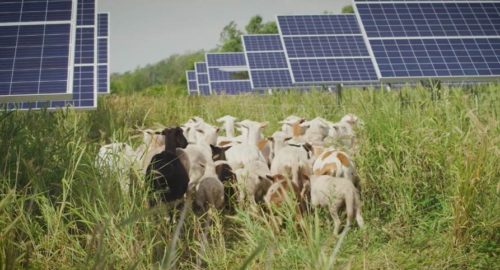
Enel North America
In this pilot phase, early research shows developers and property owners may also maximize land use through “agrivoltaic” crop production. Agrivoltaic activity enriches the quality of the soil by retaining water, sequestering carbon and improving the health and productivity of the land. In addition, early research suggests that solar panels help to regulate the temperature of crops and vegetation below them, helping to increase the yield of certain crops. These practices also may be able to help compensate for the impact of extreme weather conditions by reducing water use.
Conservation grazing plans are another way to increase the productivity of co-developed land. At Enel Green Power’s Aurora Solar Project in Minnesota, sheep are used in place of traditional, mechanical lawnmowers. Not only does this mitigate the safety risk of operating heavy machinery and damaging solar equipment, but as sheep move and graze under the operating solar panels, they enhance vegetation by aerating the soil and spreading seeds from plants around the landscape.
Building relationships and generating value for landowners and farmers
While the land use of solar arrays is a fundamental aspect of obtaining the necessary property rights and social license in farming communities, the future of solar through a dual-use model creates win-win opportunities for both landowners and solar operators to create long-term environmental and economic benefits for their land and the surrounding community.
Bringing these solutions to scale
The success of the energy transition is dependent upon ensuring inclusive, just and sustainable solutions for all stakeholders. It is imperative that the solar industry continues to collaborate with local communities and invest in scalable solutions that make the production of clean energy as sustainable as possible. Enel Green Power is participating in the energy transition by using its solar projects as living laboratories for informing the future of sustainable solar power development.
To ensure access to affordable, reliable and sustainable energy for all, solar developers must assess the potential impact and opportunity to optimize land-use practices into scalable solutions — making dual-use solar practices the industry standard.
Dual-use solar holds exciting potential for renewables development to create shared value among all stakeholders — developers, landowners and the community at large. As we enter the “Decade of Action” to achieve the UN’s 2030 Agenda for Sustainable Development and the Sustainable Development Goals, the public and private sectors must increase the adoption of innovative solutions that promote the SDGs and an accelerated energy transition to clean energy sources.
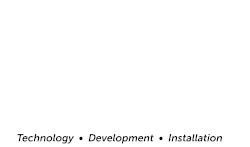
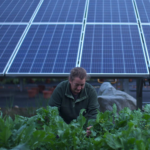
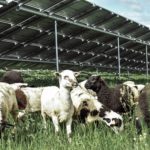
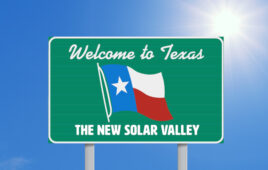
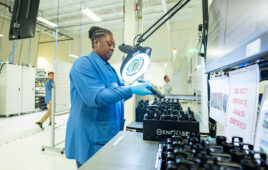
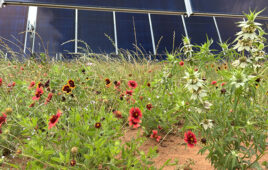
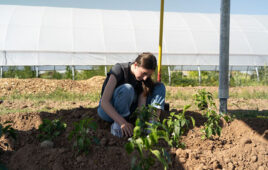
We already have dual use for bifacial panels and are looking to add wind also for agriculture plus.
Great Article Marcus!
What caught my attention is this line. “The solution: dual-use solar, the co-development of land for both ecological purposes and solar power to produce mutually beneficial solar energy generation while co-locating food, pollinator-friendly vegetation or livestock grazing practices to ensure land is used to its full potential.”
If we can extend the value of how we look at Solar Energy, there’s much more opportunity for growth.